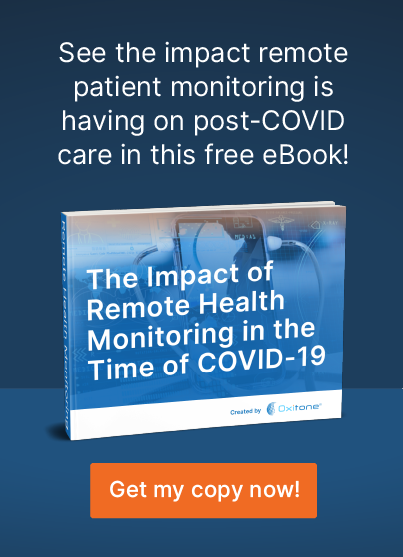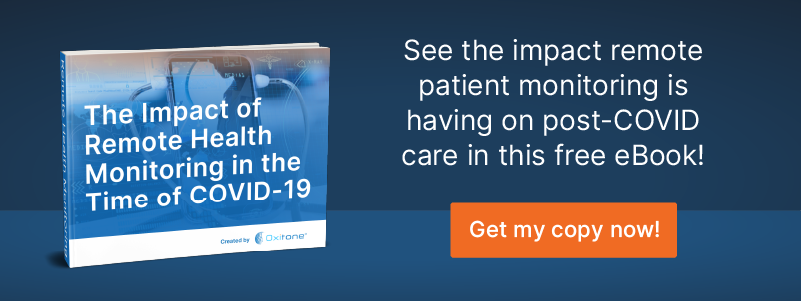COVID-19 has significantly impacted lives across the globe and has left many industries scrambling to maintain normal operations. The worldwide coronavirus pandemic has also forced industries to look for innovative ways to support the overall health and safety of customers and staff. The healthcare industry is among those whose daily operations have been most heavily impacted. There are exhausted clinicians, increased difficulties in communication due to patient volume, delayed treatments of patients with non-COVID-related health issues, increased risks for patients with comorbidities, and other factors giving rise to pronounced concern over the long-term effects of COVID-19.
The pandemic has forced sweeping changes within the entire healthcare system. Some of these led to enhanced patient care during the pandemic, and there are promises to continue doing so for the long term. The most affirmative changes include the rapid growth of virtual visit options, digital options for maintaining behavioral health, chronic condition management, and remote patient monitoring (RPM).
A Proven Solution under Fire
RPM technologies track and transmit patient vital signs to health care providers, offering real-time insights that they can use to chart the course of care. RPM technology transmits episodic patient data, while continuous remote patient monitoring (CRPM) transmits data continually or when patient parameters change significantly.
Advanced wearable tools, like pulse oximeters and thermometers, gather data automatically and transmit it to clinicians. These non-invasive, digitally connected technologies enable clinicians to monitor vital details, like pulmonary function, blood pressure, temperature, and other major physiological parameters, for changes in symptoms and progression of the disease.
By providing support to proactively manage care, RPM effectively curbs hospital admissions, a factor that has been eminently helpful during the coronavirus pandemic. This was not only a benefit to patients but also served to free up busy staff and dramatically lower costs.
Before the pandemic, RPM tools were already becoming increasingly common. These included blood sugar monitors, blood pressure cuffs, and patches responsible for tracking medical adherence. A recent study revealed that around 88% of healthcare providers have either invested in or are evaluating the overall scope of RPM technologies.
With clinicians using RPM solutions during the pandemic, patients with chronic conditions were able to rely on wearable devices that monitored vital signs like oxygen saturation levels, blood pressure, heart rate, overall quality of sleep, and/or activity level. The information gathered was sent to the providers’ secure dashboard, which provided alerts and critical insights. Using this treatment paradigm, providers could quickly pivot if the incoming data revealed signs of trouble, without ordering patients to the clinic or hospital. RPM offers patients the ultimate peace of mind, knowing that they are being monitored and that their wearable device will convey any changes in their status to their clinician.
Refining the Process
The demand placed on RPM developers during the pandemic will undoubtedly lead to even more refinement and efficacy in RPM technologies. While such solutions were integral in enhancing public health and mitigating risk factors during the pandemic, its specific limitations include:
- Solutions having too many devices
- Solutions featuring a vast number of analytic source points
- The overall negative impact of multiple devices on patient compliance
In the past, following up with chronic and high-risk patients was a challenging and often costly process. RPM and CRPM have effectively revolutionized this proposition, simplifying paradigms of care, mitigating risk, and lowering both costs and clinician and patient stress. Oxitone now has a full suite of FDA-cleared solutions for continuously generating automated medical follow-up. Using this revolutionary technology, clinicians can unlock intelligent, real-time insights while effortlessly following up with high-risk patients. Oxitone helps in delivering access to value-based healthcare by providing excellent patient, economic, and clinical outcomes and reducing utilization costs.
Oxitone delivers the ease of remote continuous care, including:
- Real-time continuous data
- Continuous care flow
- Automated follow-up
- AI-powered predictive alerts
Oxitone wearable devices are capable of measuring and monitoring multiple parameters, in opposition to other kits that only measure one or limited parameters.
COVID and RPM Reimbursement
The typical early use cases for RPM highlighted the need to provide continuous, virtual modes of care for chronic and high-risk patients and improve patient and provider engagement. The demand for RPM technologies has exploded due to the COVID-19 pandemic, and the market is expected to double in the coming years.
In the US, Medicaid and Medicare have experienced disproportionate rates of inpatient chronic disease care and other limitations that have increased disbursement levels. As the pandemic continues, the utilization of RPM technology has been increasingly relied upon by healthcare providers for several reasons:
- Enabling the ongoing monitoring of patients outside the conventional clinical setting, i.e., providers aren’t required to come into direct contact with high-risk populations
- Eliminating the need for in-person patient visits, which decreases the overall risk of patient and provider exposure to infection
- Reducing the healthcare costs significantly for healthcare organizations and patients
- Helping healthcare organizations scale valuable clinical staff (scheduling)
Over the past several years, the Centers for Medicare and Medicaid Services (CMS) have worked to refine and clarify the reimbursement codes for RPM in response to the growing shift and demand for virtual care services. In December 2020, in ongoing efforts to expand qualifying parameters for RPM expenditures, CMS released the final Medicare Physician Fee Schedule for 2021. There are now five main codes under “Remote Patient Monitoring Reimbursement COVID” that cover RPM and CRPM, but the delineations between covered and non-covered treatments are more apparent. In general, CMS has made the clarification that practitioners can now furnish RPM services for chronic and acute conditions without inordinate concern over reimbursement.
The benefits and use cases of CRPM are obvious. However, for it to live up to its fullest potential in the long term (and until the pandemic abates), the healthcare industry will require ongoing reimbursement reforms. Fortunately, industry and third-party payers have become convinced that continuous, proactive, digital models of intensive care, such as CRPM solutions, are indispensable for patients suffering from chronic conditions.
Here at Oxitone, we boost value-based healthcare by delivering extraordinary patient, clinical, and economical outcomes at reduced medical utilization and cost. Patients need a prompt response to emergencies. Physicians need an easy and timely follow-up with patients. Our mission is to transform chronic disease management and help save lives worldwide.
Let’s save lives together! To see how we help remote patient monitoring companies and physicians improve the management and care of high-risk patients, contact us today!


